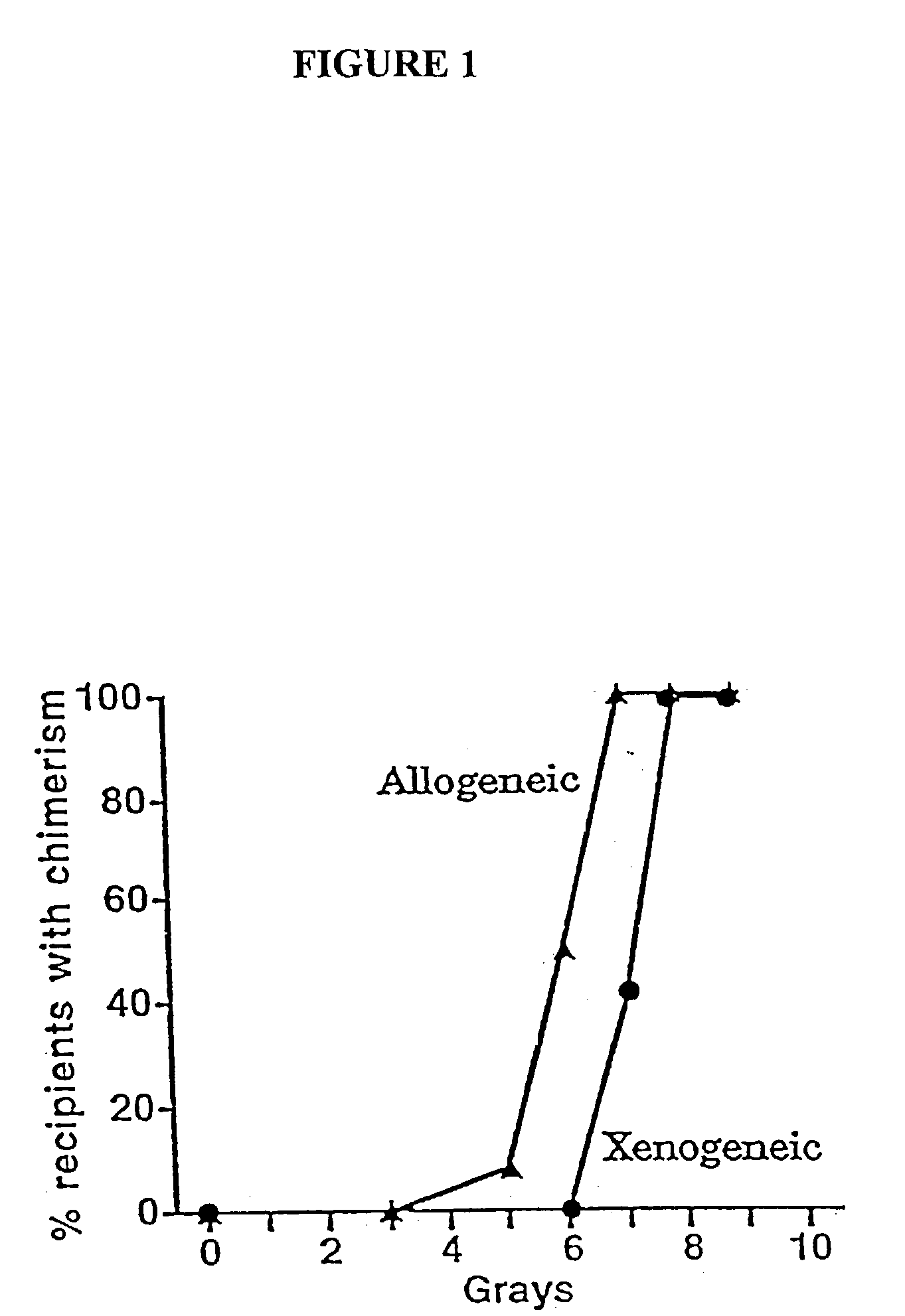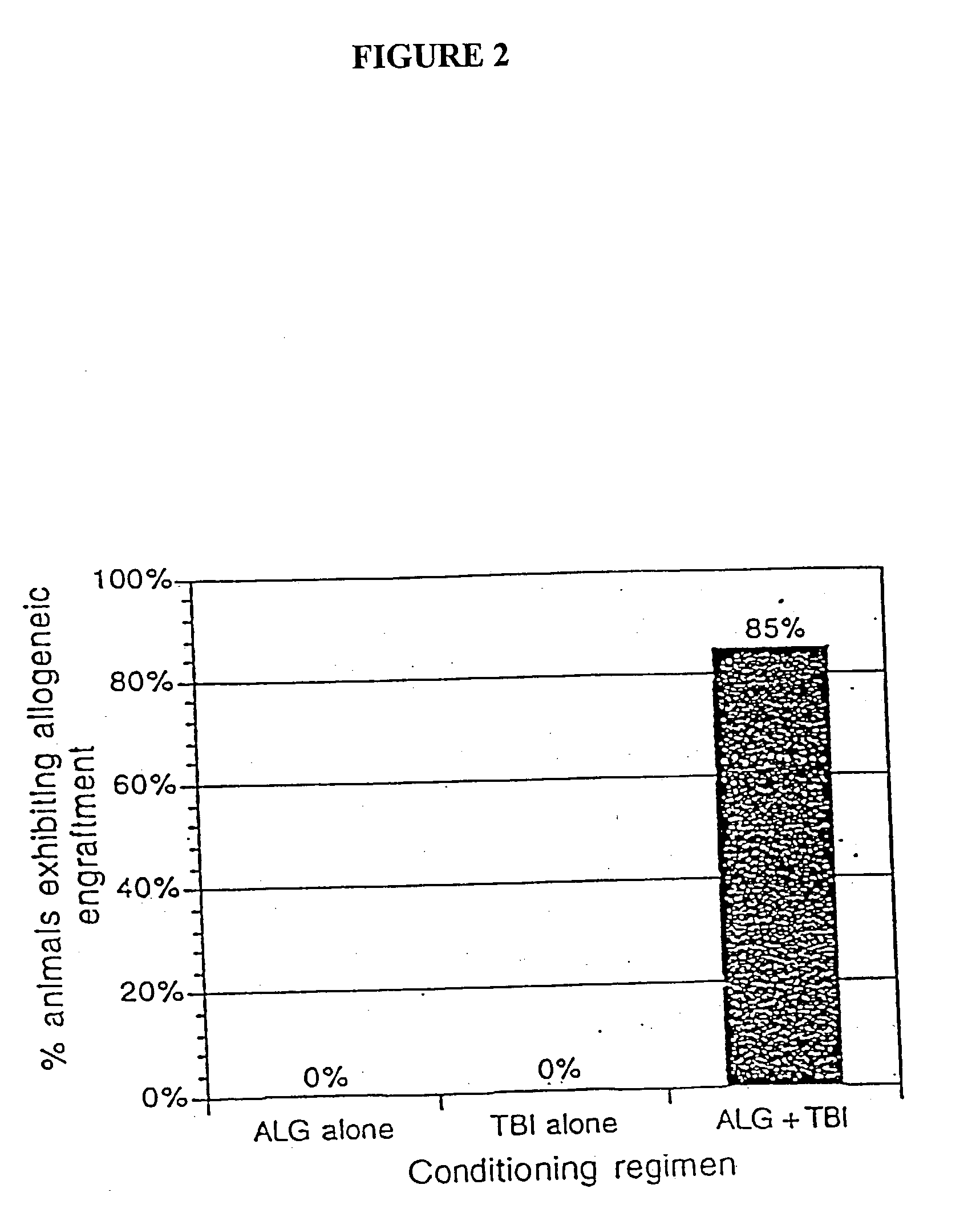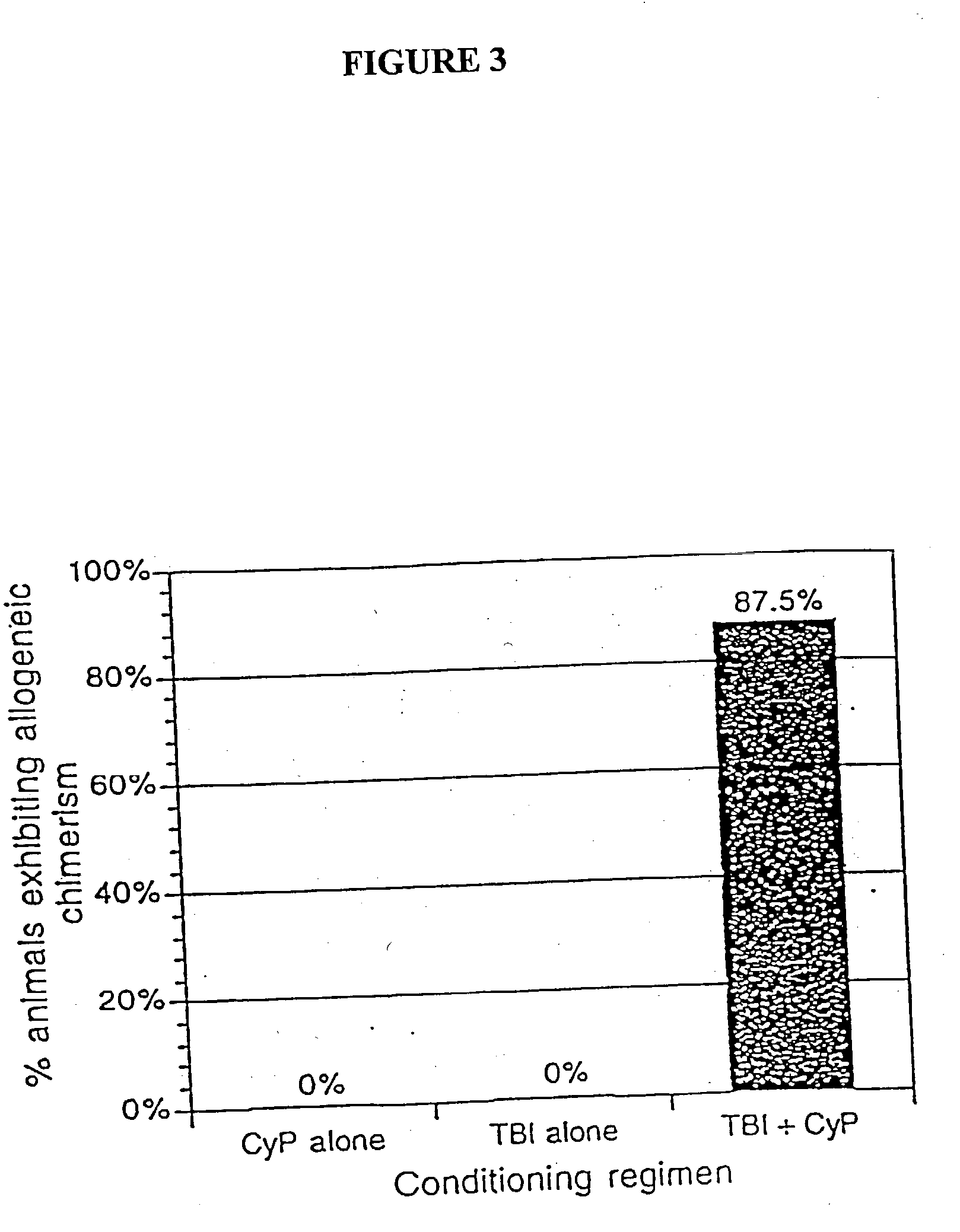Non-lethal methods for conditioning a recipient for bone marrow transplantation
a bone marrow transplantation and recipient technology, applied in the field of non-lethal methods of conditioning a recipient for bone marrow transplantation, can solve the problems of increasing the susceptibility of recipients to infections and other diseases, affecting the survival rate of recipients,
- Summary
- Abstract
- Description
- Claims
- Application Information
AI Technical Summary
Benefits of technology
Problems solved by technology
Method used
Image
Examples
Embodiment Construction
[0040] The present invention relates to non-lethal methods of conditioning a recipient for bone marrow transplantation. These methods include the use of non-lethal doses of irradiation, cell type-specific or cell marker-specific antibodies and active fragments thereof, cytotoxic drugs or a combination thereof. In particular, the present invention encompasses an approach to make space in a recipient's bone marrow by targeting critical cell populations in the hematopoietic microenvironment in the complete absence of radiation treatment.
[0041] The invention is discussed in more detail in the subsections below, solely for the purpose of description and not by way of limitation. For clarity of discussion, the specific procedures and methods described herein are exemplified using animal models; they are merely illustrative for the practice of the invention. Analogous procedures and techniques are equally applicable to all mammalian species, including human subjects.
5.1. Non-Lethal Conditi...
PUM
| Property | Measurement | Unit |
|---|---|---|
| time | aaaaa | aaaaa |
| pH | aaaaa | aaaaa |
| pH | aaaaa | aaaaa |
Abstract
Description
Claims
Application Information
 Login to View More
Login to View More - R&D
- Intellectual Property
- Life Sciences
- Materials
- Tech Scout
- Unparalleled Data Quality
- Higher Quality Content
- 60% Fewer Hallucinations
Browse by: Latest US Patents, China's latest patents, Technical Efficacy Thesaurus, Application Domain, Technology Topic, Popular Technical Reports.
© 2025 PatSnap. All rights reserved.Legal|Privacy policy|Modern Slavery Act Transparency Statement|Sitemap|About US| Contact US: help@patsnap.com



